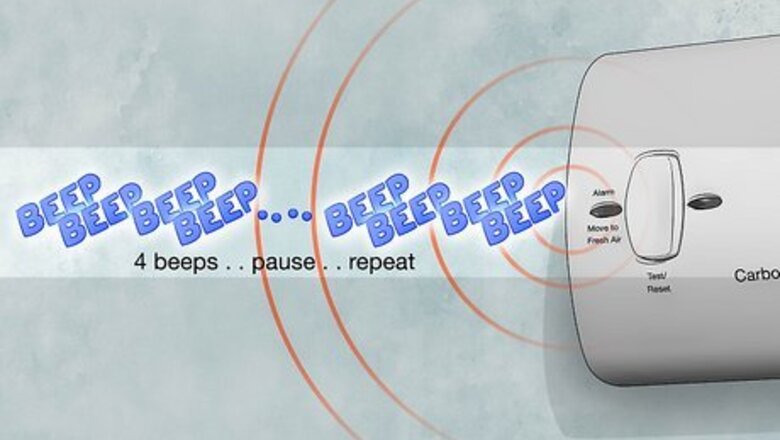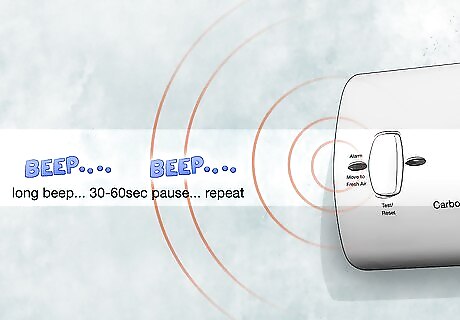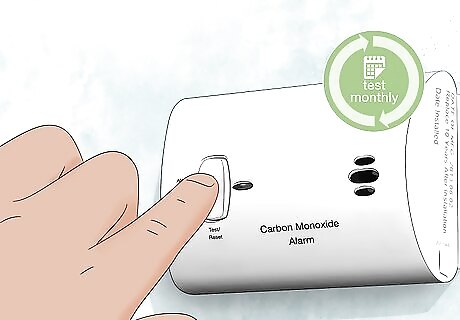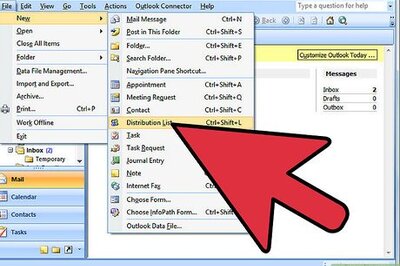
views
- Replace the batteries to silence the “low battery” beep, or press and hold the test/silence button to turn off the high-CO warning alarm.
- During an alarm, evacuate immediately and call emergency services. Make sure everyone is accounted for and check for CO poisoning symptoms.
- After the building is safe to re-enter, call a professional to examine your appliances and repair or replace the source of the CO leak.
Silencing the Alarm

A pattern of 4 beeps followed by a short pause indicates an emergency. If you hear this pattern, it means your CO alarm has detected dangerous amounts of carbon monoxide and you need to evacuate the building. Review your owner’s manual before there’s an emergency so you can quickly recognize what your alarm’s different beeping patterns are telling you. To stop the sound: Press and hold the test/silence button for 5 seconds to reset the alarm. A light will keep flashing to indicate CO levels are still high.Turn Off Carbon Monoxide Alarm Step 1Bullet1.jpg You may have to press the button several times to stop the sound. The alarm may beep again after a few minutes if CO levels stay unsafe. The test/silence button might also be called test/mute, mute, reset, or a combination of those terms. Consult your user manual for specifics.

A single beep every 30-60 seconds means the alarm battery is low. First, locate the beeping alarm and remove it from the wall to swap batteries. Most wired alarms are mounted on a circular plate—just twist counterclockwise until it comes off. If the alarm keeps beeping with a fresh battery, it means it’s nearing the end of its life and should be replaced as soon as possible. To stop the sound: Remove the old battery and wait 30 seconds to put in a new one. Match the positive end of the battery with the positive terminal.Turn Off Carbon Monoxide Alarm Step 2Bullet1.jpg Replace the alarm, then press and hold the test button until you hear a beeping sound (this may take up to 30 seconds depending on the model).Turn Off Carbon Monoxide Alarm Step 2Bullet2.jpg Most carbon monoxide detectors use 9-volt batteries, but some use AA or AAA batteries.

A continuous beep or random chirps means there’s a power issue. Depending on your model, you’ll hear beeping when the alarm is unplugged or there’s a power outage, a wiring problem, or an issue with the CO sensor. If your power and wiring are working fine and the alarm is still squealing, call a professional to inspect the device and consider replacing it. To stop the sound: Make sure the alarm is plugged all the way in or that any wire connections are secure and unbroken. Try disconnecting and reconnecting the alarm or wrapping frayed wires with electrical tape. Wipe the air filter with a damp cloth, but don’t get the alarm wet. Sometimes, a clogged filter can trigger the alarm as well.
Emergency Procedures

Gather your family and head outdoors as soon as possible. Silence the alarm by holding the test/silence button if you pass the alarm on your way out, but this isn’t necessary. If you’re unable to get outside, stand by an open window or on a fire escape to get fresh air. Do a headcount to make sure everyone is accounted for and away from the potential CO leak. Remember that carbon monoxide is odorless and colorless. Always evacuate regardless of whether you observe a direct threat or not.

Open accessible windows and doors on your way out of the building. For speed and safety, don’t go out of your way to crack every window in your home. Just open doors and windows you pass as you evacuate (and have other family members do the same). If you can’t exit the building, then go ahead and open as many doors and windows as you can to increase fresh air circulation. Carbon monoxide is about the same density as air, so it can mix and travel throughout your home easily.

Turn off appliances that use carbon fuel like natural gas or gasoline. Only do this if you’re passing them on your way out and you’re not experiencing CO poisoning symptoms. Some appliances produce carbon monoxide when they don’t burn their fuel completely (incomplete combustion). Potential CO-producing appliances include: Gas stoves Hot water heaters Fireplaces Lawnmowers Pilot lights Gas or oil furnaces Car exhaust fumes Wood-burning stoves Charcoal Gas space heaters

Dial 911 and explain that your carbon monoxide alarm has gone off. Call even if you think it might be a false alarm (better safe than sorry!). The dispatcher will send a crew with detection devices to locate the source of CO in your home (or confirm whether the alarm was accurate or not). Once they locate the leak, they will turn off the appliance causing it and ventilate your home with high-powered fans. Once the crew finishes their work, they’ll conduct a final test to make sure your home is safe to re-enter. Do not try to re-enter your home until a professional has tested the air and said it’s safe to go back inside.
Signs of CO Poisoning

Check yourself and others for flu-like symptoms that indicate poisoning. Call 911 to treat CO poisoning immediately if you or anyone you’re with is experiencing symptoms like headaches, nausea, or dizziness. These are all early signs of poisoning that will get worse without treatment and possibly result in death. Intoxicated, elderly, pregnant, or ill people are more sensitive to the effects of carbon monoxide. Common symptoms include: Dull headache Weakness Dizziness Nausea or vomiting Shortness of breath Confusion Blurred vision Loss of consciousness Poisoning happens when carbon monoxide builds up in your bloodstream and starts to replace the oxygen in your red blood cells.
Fixing Leaks

Call a professional to inspect all fossil fuel-burning appliances. Contact HVAC technicians or local repair techs and explain that the appliances are off, but may have a CO leak. Try not to use common culprits like furnaces, boilers, water heaters, or stoves until they’ve been inspected. Aim to have your appliances maintained and inspected regularly to avoid future safety hazards. If necessary, you may have to replace a faulty appliance to avoid future leaks. Emergency 911 crews will turn off the original source of CO, but will not repair it.
Alarm Testing

Test your carbon dioxide alarm battery once a month. Hold down the test button until the detector beeps or sounds an alarm. If the alarm doesn’t go off (or sounds too quiet), replace the batteries and try again. If the whole alarm is no longer working, purchase a new alarm as soon as possible. Do this test to check the batteries and circuitry in the alarm. To test the CO sensor, purchase CO detector spray and follow the instructions on the packaging.Turn Off Carbon Monoxide Alarm Step 10Bullet2.jpg




















Comments
0 comment